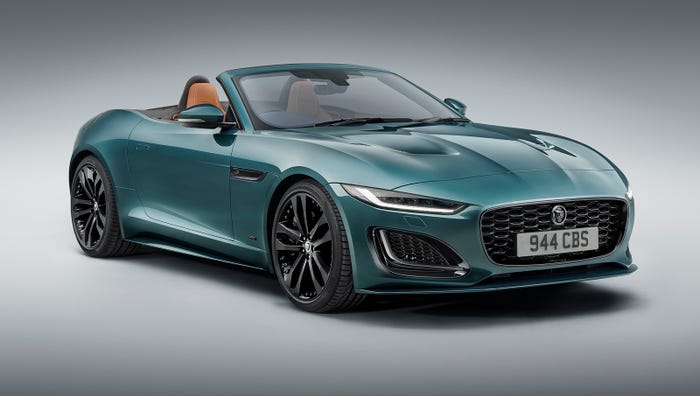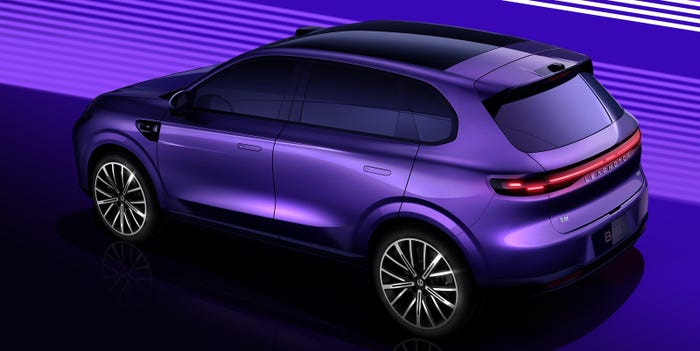Hyundai Looks to Next Decade for Fuel-Cell Commercialization
The Korean auto maker created its first light-duty, fuel-cell stack making just 3 hp (2 kW) in 1999 and gradually worked its way up to a 134-hp (100-kW) stack this year.


YONG-IN CITY, South Korea – Nestled into a hillside of the Mabuk section of this Korean city, Hyundai Motor Co. Ltd.’s Eco-Technology Research Institute is an important component of the auto maker’s future growth plans.
Here at the $60 million center, which opened in September 2005, Hyundai engineers are developing the auto maker’s next-generation green technologies.
The facility, itself, was built to be environmentally friendly, with features such as double-skin windows that allow natural ventilation in summer and create a greenhouse effect in winter.
Four research teams work within the waterfall-like architecture, two of them dedicated solely to hydrogen fuel-cell development.
As with other automotive competitors, such as General Motors Corp., Toyota Motor Corp. and Honda Motor Co. Ltd., the motivating factor for Hyundai’s pursuit of hydrogen fuel-cell systems is multifaceted – global warming and the depletion of oil reserves among them.
“What is really important to us is regulations,” says Kim Sae-Hoon, senior research engineer-Fuel Cell Vehicle Team 1. “We want to sell cars, and I think at some time we have to sell some amount of zero-emission vehicles.”
Hyundai created its first light-duty, fuel-cell stack making just 3 hp (2 kW) in 1999 and gradually worked its way up to a 134-hp (100-kW) stack this year.
The newest stack was shown in the fuel-cell vehicle platform Hyundai debuted at April’s Seoul Motor Show.

Fuel-cell models undergoing testing in U.S., South Korea.
The stack uses metal bipolar plates, which are said to be lighter-weight than alternatives such as graphite, and have better conductivity. The stack is located in the center of the chassis.
With an additional two 27-hp (20-kW) motors in each of the rear wheels, Hyundai says the driving range of the platform is 375 miles (600 km), with a maximum speed of 106 mph (171 km/h) and a 0-68 mph (110 km) time of 16 seconds using 10,150-psi (700-bar) hydrogen fuel.
While the fuel-cell system is 48% efficient tank-to-wheel, it still does not meet Hyundai’s goal.
“(Sixty percent) is our ideal efficiency,” says Kim. “I think this is a number we can meet in 2012.”
However, Kim says Hyundai’s use of ambient pressure to operate its fuel-cell stack already puts it ahead of the competition.
“Most of the vehicle companies are using high-pressure fuel-cell systems,” he says. “They show good efficiency, but there has been a lot of parasitic loss.”
The ability of fuel-cell vehicles to start in below-freezing temperatures has been a key barrier to commercialization. But with its newest system, startup is possible at a temperature of below 22° F (-6° C), Hyundai says.
“Our barrier to be commercialized is three items, one is cold startup, second durability and third cost,” says Kim “And I think Honda has announced that they can do the cold startup and we did that also.”
The platform shown at the Seoul show can accommodate a variety of body types, Kim says, and Hyundai hopes to begin producing fuel-cell vehicles in small volumes, approximately 10,000 units annually, by 2010. Mass production should begin by 2015, the auto maker promises.
That goal is similar to other auto makers, with Honda, DaimlerChrysler AG and Ford Motor Co. each shooting for the 2010-2015 timeframe. GM has said it wants to be producing millions of FCVs by 2020. Hyundai, along with competitors, already is testing FCV prototypes in fleet programs.
Hyundai developed its first FCV in 2000, using its Santa Fe midsize cross/utility vehicle as the shell. The CUV was equipped with a 100-hp (75-kW) fuel-cell stack, 100-mile (160-km) driving range and top speed of 78 mph (126 km/h), despite lacking battery power.
The FCV participated in California’s Fuel Cell Partnership Program that same year, logging 37,282 miles (60,000 km) in the following four years, through November 2004.
Meanwhile, Hyundai developed a next-generation Santa Fe FCV in 2002, this time applying a nickel-metal-hydride battery as a secondary source of energy.
“We have studied hybrid (electric-vehicle) systems and found out (they) have a lot of advantage also in fuel-cell vehicles,” says Kim. “We can increase vehicle efficiency with the use of (a) battery by about 100%.”
Since December 2004, Hyundai’s Tucson CUV FCV has participated in a U.S. Dept. of Energy program in conjunction with Chevron Corp. and fuel-cell supplier UTC Power, a unit of United Technologies Co.
About 32 vehicles are in use at various U.S. locations, including five at Hyundai’s Southern California technical center, with a cumulative 87,613 miles (141,000 km) logged in the last three years.
At the same time, sister company Kia Motor Corp.’s Sportage CUV is participating in a South Korean government fleet program sponsored by the Ministry of Commerce, Industry and Energy, which has budgeted 23.4 billion won ($25.1 million) for the program’s first three years.
Some 30 SUVs, along with four fuel-cell-powered Hyundai buses, will be tested for two years, logging more than 12,427 miles (20,000 km) per vehicle.
The program, which runs from 2006-2011, includes various sites in the country, with the majority (20 SUVs and three buses) being tested in the Seoul/Gyunggi area.
Additionally, a Kia FCV will be put into service this year on Jeju Island, on South Korea’s southeastern coast, which is trying to make its own wind-generated electricity in an effort to preserve the island’s natural beauty, Kim says.
The Sportage model currently undergoing evaluation in South Korea has a Hyundai-developed 107-hp (80-kW) fuel-cell stack. The CUV can start within two minutes at 14° F (-10° C) and has a range of 240 miles (384 km), with a top speed of 88 mph (142 km/h). It uses a 152-volt lithium polymer battery and runs on 5,075-psi (350-bar) hydrogen.
The Hyundai Tucson FCV being tested by the U.S. DOE uses a UTC Power fuel-cell stack making 107 hp (80 kW) and also uses 5,075-psi (350-bar) hydrogen.
While its driving range is slightly less than the Sportage (211 miles [337 km]), the Tuscon’s top speed is higher at 96 mph (154 km/h). Its battery also is lithium polymer.
The Tucson FCV can start in temperatures below 20° F (-7° C), although it takes about five minutes. Hyundai says it achieved start-up after soaking the vehicle for three days at this temperature in an environmental chamber.
Due to the extreme cost of building FCVs (Honda has estimated its costs at $1 million per vehicle), Hyundai virtually crash-tested the Tucson in cyberspace to verify the hydrogen tanks would remain leak free.
Front, rear and side collisions also were simulated at about 30 mph (48 km/h). However, this year Hyundai physically crash-tested a Sportage FCV in a 30-mph rear collision, in accordance with current South Korean safety standards, a company spokesman says.
The Sportage’s hydrogen tanks were filled with 435-psi (30-bar) hydrogen during the test. Hyundai then added 5,075-psi hydrogen to test for leaks, finding none.
Read more about:
2007About the Author
You May Also Like





